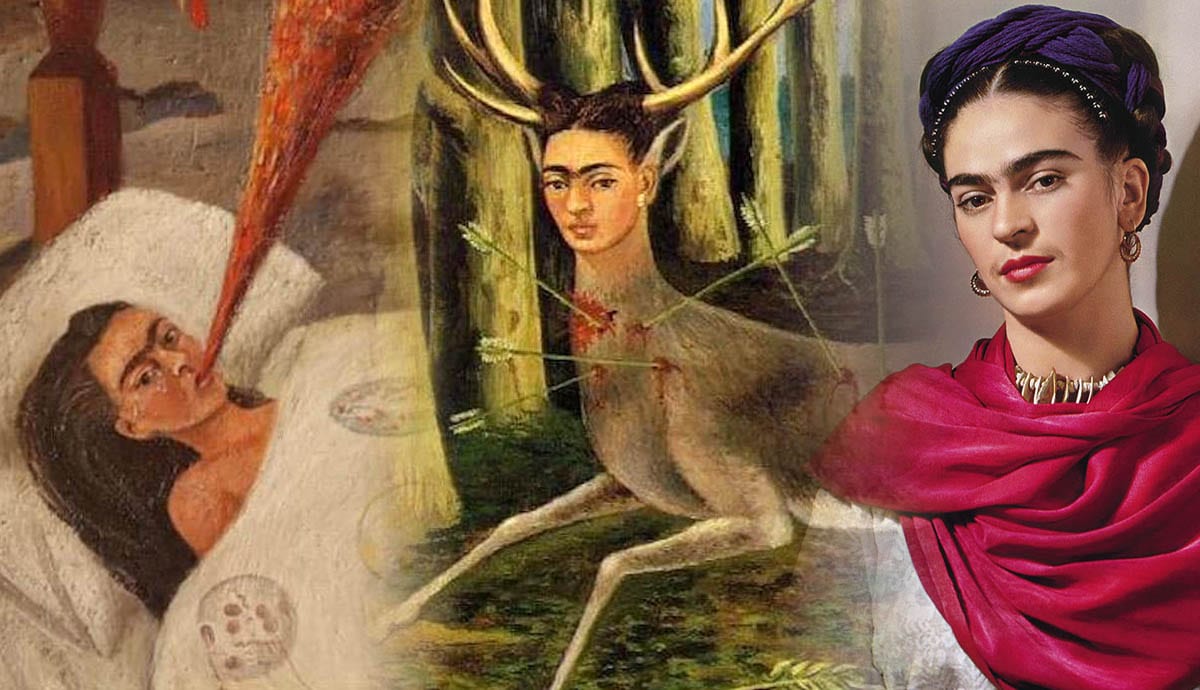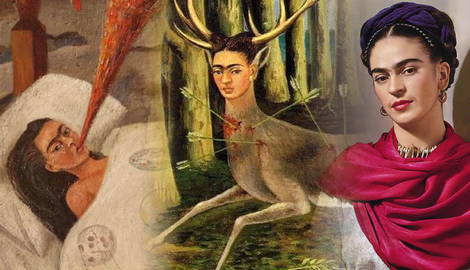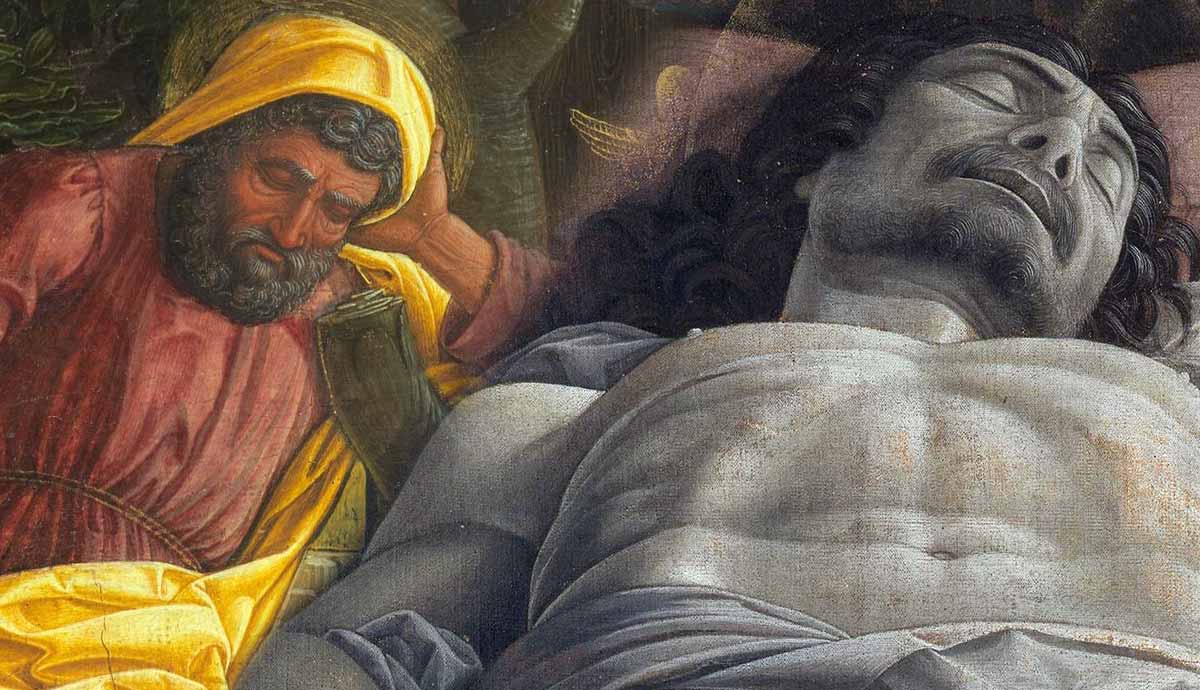
Magdalena Carmen Frida Kahlo y Calderon was a famous Mexican painter born in Mexico City in 1907. She began painting in the mid-1920s and continued to do so throughout the rest of her life. Kahlo was known mostly for her Surrealist self-portraits, but unknown to many was her lifelong struggle with chronic illness and the origin of the pain in the art that she created.
Frida Kahlo’s Childhood

Frida Kahlo grew up in Coyoacán, a southern neighborhood in central Mexico City. She was born to a German immigrant father, Wilhelm, and a Spanish and Native American mother, Matilde. At just six years of age, Frida contracted polio and was unable to leave her bed for nine months. At the time, there were no effective treatments for polio and it wouldn’t be until decades later that the first successful polio vaccines were invented. Due to the disease, Frida’s right leg and foot were significantly thinner than her left ones. Nevertheless, as Frida grew healthier she played soccer, swam regularly, and even participated in wrestling– breaking many gender norms of the time.
At age fifteen, Frida Kahlo began attending the National Preparatory School in Mexico City, a prestigious and renowned school. She was one of only thirty-five girls selected to attend. At the school, she met Mexican muralist Diego Rivera and often watched him work. While attending school, Frida became involved with a group of students with similar, more progressive political ideas. The students named themselves the Cachuchas, after a nickname for a cap worn by members of the group. One member of the group, Alejandro Gomez Arias, began a romantic relationship with Frida, even exchanging love letters with her.
While Kahlo and Arias were traveling home from school one afternoon, the driver of the bus they were on attempted to cross in front of an electric streetcar which ended up with the two vehicles colliding and the bus being dragged for several feet. Nearly everyone on the bus ended up passing away, either instantly because of the impact or later due to their injuries.

Somehow, Arias suffered only minor injuries from the accident, but unfortunately, that was not the case for Frida Kahlo. An iron handrail impaled Frida through her pelvis, making her unable to escape the bus on her own. Other passengers, including Arias, had to help remove the handrail from her body which was extremely painful for Frida. She left the bus that day with her pelvis fractured, her spine and already damaged right leg broken in multiple places, a punctured abdomen and uterus, her collarbone broken, and her shoulder dislocated.
Recovering from the bus accident took months of staying in the hospital undergoing surgery and several more months of staying in bed at home, wearing casts and braces. Throughout her life, she was operated on more than thirty times. Due to her extreme pain, she was practically forced to drop out of school and she had to give up her dream of becoming a medical illustrator, a job she had wished to pursue for years.
During her long recovery, she took up painting to pass the time, using a special lap desk-like easel that allowed her to paint while lying down. Depicting her pain in art was one of her only outlets. Throughout this painful time in her life, Arias did not visit her which left her even more isolated and lonely. In 1928, she was reacquainted with the muralist she met at her school, Diego Rivera, and the two connected romantically. Although there was a twenty-one-year age gap between the two, they married in the summer of 1929.
Relationship With Diego Rivera

Although the two painters were supportive of each other’s work, their relationship was far from picture-perfect. After their marriage in 1929, they divorced in 1940 only to be married again that same year. Both Kahlo and Rivera were unfaithful to each other, Rivera having an affair with Frida’s younger sister and Frida having her own affair with the soon-to-be assassinated Russian Marxist, Leon Trotsky. Despite the unfaithfulness, after their initial divorce and second marriage to each other, they stayed together until Frida’s premature death in 1954.
Frida’s comments on the relationship seem to confirm its instability, saying once “I suffered two grave accidents in my life, one in which a streetcar knocked me down. . . . The other accident is Diego.” While the two tried to have children, the bus accident that punctured her uterus prevented the couple from successfully bearing a child. In letters to her physician, Dr. Leo Eloesser, it was revealed that Frida went through a miscarriage in 1932 and an earlier medically necessary abortion. In these letters she expressed her devastation, writing to the doctor that she had “so looked forward to having a little Dieguito that [she] cried a lot, but it’s over, there is nothing else that can be done except to bear it.” She went on to say that she was jealous of Diego’s first wife, Guadalupe Marin, for her ability to bear his two daughters.

While her most famous extramarital affair was with a man, Frida was also known to pursue women, having affairs with Georgia O’Keeffe and Josephine Baker among many others. Despite the illegal status of same-sex romantic relationships at the time, Frida was fairly open about her bisexuality, even known to charm her husband’s girlfriends. Both Frida and Diego were political activists, Frida denouncing colonialism, fighting for the rights of women, attending numerous political protests, and joining the Mexican Communist Party.
Pain In Art: 4 Paintings By Frida Kahlo
1. Without Hope, 1945

While not all of Frida Kahlo’s paintings depict her struggle with chronic illness, many of them do. For example, in 1945 after a doctor ordered Kahlo to be fed forcibly, she painted one of her signature self-portraits. In it, she is lying in her bed, the background featuring moon and sun-like spheres in a beige sky. A wooden mechanism holds a conglomerate of hanging, reddish-brown food, a human skull, and a chicken carcass visible in the mess.
The amalgamation of food flows into Frida’s mouth as she stares into the distance. Kahlo titled the painting Without Hope, making her feelings on the doctor’s orders abundantly clear. Even today, finding adequate treatment proves to be surprisingly difficult for chronically ill people, so one can only imagine how hard it must have been in 1940.
2. The Bus, 1929

In another painting titled The Bus, Frida Kahlo depicts a scene from the bus moments before the life-changing accident took place. In the painting, she also comments on socio-economic status and classism in Mexico, showing a series of people of different classes sitting next to each other on the bus. A middle-aged woman, a blue-collar worker in his overalls, a mother and her children, a businessman quite literally holding a bag of money, and a young girl, possibly Frida, all side by side.
While it was unusual to depict such personal pain in art at the time, the political and social commentary she included making it even more unusual, both critics and fellow artists quickly became fans of Frida Kahlo’s work. In 1938, she had an exhibition at New York City Gallery, a significant achievement especially for a disabled woman. In the following year, she was invited to Paris by the French poet André Breton and befriended artists Piet Mondrian, Marc Chagall, and Pablo Picasso. In a letter to Diego Rivera, Pablo Picasso remarked on the expressive beauty of her work, saying “Look at those eyes, neither you nor I are capable of anything like it.”
3. The Broken Column, 1944

The pain in art Frida Kahlo portrayed had been missing from the mainstream art world for decades at that point. In 1944, she painted another one of her famous self-portraits, this time showing herself split in two by a metal pillar which, in reality, represented a surgical brace she had to wear as part of her recovery from a surgery meant to reduce her chronic pain. Unfortunately, the surgery and brace meant to help her only worsened the pain, leaving her with a column of metal digging into her spine constantly. The painting shows nails piercing Frida’s skin all over her body, her hands tinted red most likely from blood, and the column that divides her body leaving a gaping wound through the center of her.
4. The Wounded Deer, 1946

In 1946, Frida Kahlo had another surgery on her back, this time in New York. Unfortunately, just like the other treatments, the surgery didn’t reduce her chronic pain and only made it worse. The surgery caused her great physical pain and the constant failure of her treatments further contributed to her depression. Frida painted The Wounded Deer that same year, expressing her pain and emotional anguish. Frida had many different pets throughout her lifetime, including dogs, birds, and monkeys, but one of her favorites was a small deer she named Granizo. She used Granzio as a model while painting this work, but painted her own face onto the deer’s body, adding antlers to her head.
The deer in the painting is severely wounded, nine arrows pierce its body. There’s a dark forest in the background and a sky filled with lightning lying above a body of water. At the bottom of the painting next to her name, Frida writes the word ‘Carma,’ the Spanish equivalent of the Hindu concept of karma, referring to her fate. While the timing of the painting in relation to her surgery points to it being an expression of her physical suffering and frustration, other interpretations argue the painting is a statement on the frustration she feels being unable to control her destiny, or possibly a piece on pain stemming from her personal relationships.
Frida Kahlo’s Late Life

In 1953, Frida Kahlo had her first one-person exhibition in Mexico. Due to her poor health, her doctors advised her not to go, but she insisted on attending. Although she was brought into the exhibition on a hospital stretcher, the exhibition was a success. As the year went on, her health grew worse and worse. Her extremely weak right leg became infected with gangrene and had to be amputated below the knee, causing her to become a full-time wheelchair user. She became deeply depressed and possibly suicidal during this period in her life, due to her extremely poor health. On July 13th, 1954, just a week after her 47th birthday, Frida Kahlo died of pulmonary embolism set on by pneumonia. While a pulmonary embolism remains the official cause of death, there are rumors that Kahlo overdosed on painkillers.
Frida was one of the first artists to share her own personal struggles with chronic pain in art is still felt by millions of fans worldwide. The house she grew up in is now a museum, displaying her belongings and artworks. Many of her paintings are now on display at the Harry Ransom Center research library and museum at The University of Texas at Austin and the Museo de Arte Moderno, or Museum of Modern Art, in Mexico City. A movie starring Mexican American actress Salma Hayek that depicted Frida’s life story was released in 2002 and grossed $56.3 million at the box office. Even though Frida Kahlo passed away almost 70 years ago, her impact on the world of art has lasted and isn’t going anywhere.









